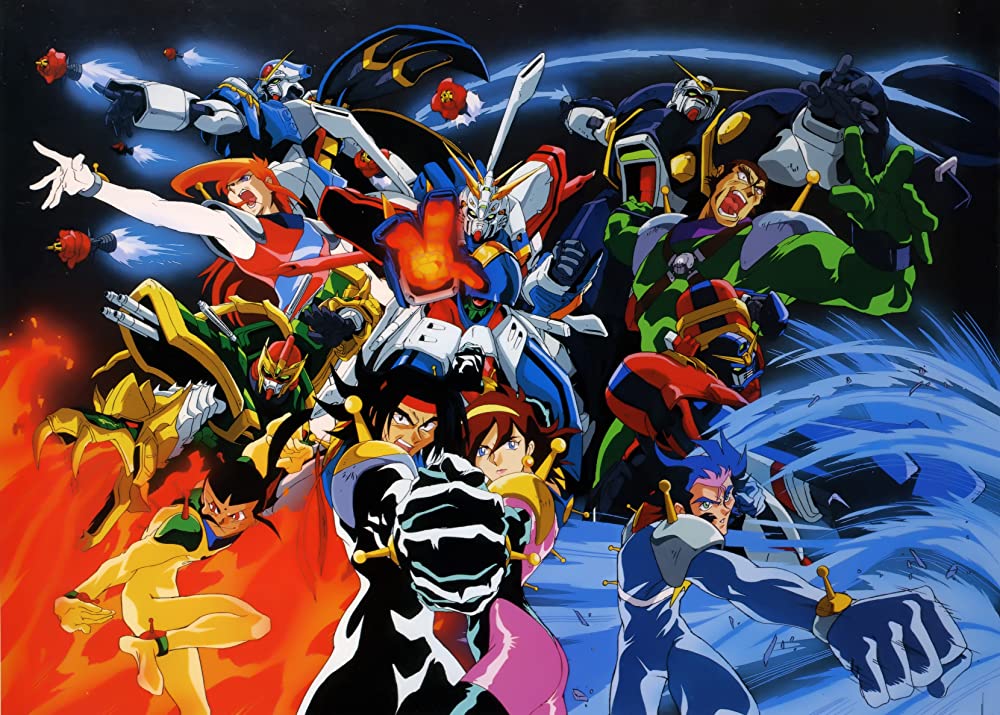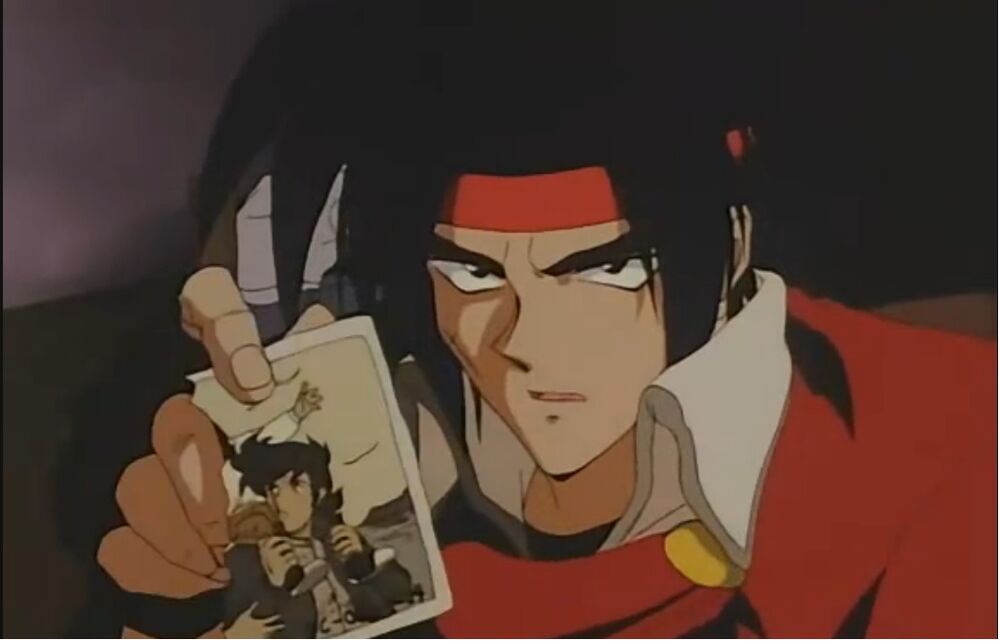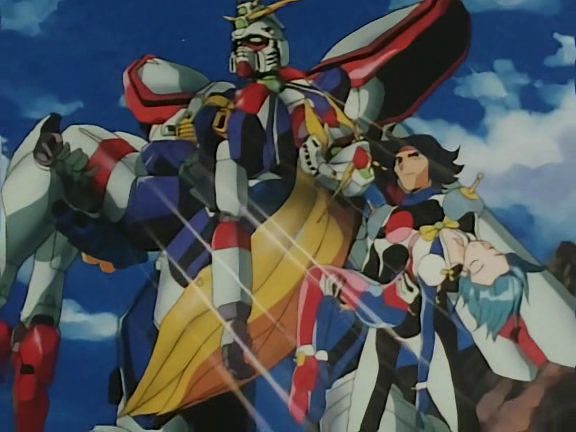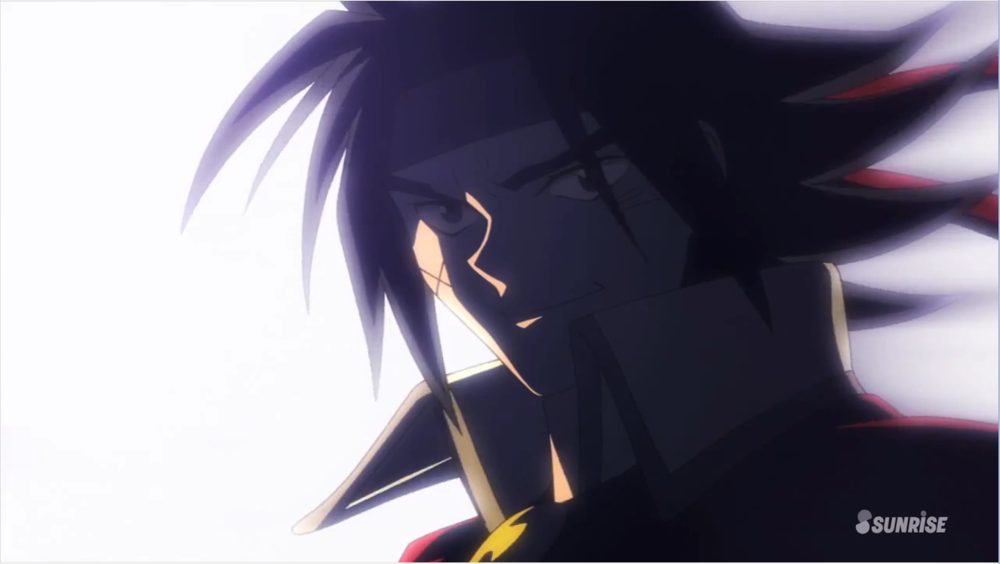
The Gundam franchise, by the early 1990s, was not in the best shape. Following the troubled production and reception of Mobile Suit Victory Gundam (1993-94), as well as Sunrise’s acquisition by Bandai as a subsidiary, the studio had to find some way to reinvigorate interest in the saga. The result was the creation of “alternate universes” separate from the original Universal Century timeline, of which Mobile Fighter G Gundam (1994-95) would be the first of many. It’s also one offshoot that would be vindicated in time.
The first TV series to be done without Yoshiyuki Tomino’s involvement, the anime was headed by protégé Yasuhiro Imagawa in his first directorial stint, and written by studio veteran Fuyunori Gobu. As divulged by Imagawa himself in a later Otaku USA interview in 2010, it was decided at the time that a reboot of the concept was needed to increase sales, especially among younger audiences. That move has since gone down as one of the more over-the-top entries in the voluminous canon, for better or worse.
Dig a little deeper, however. Past the memes and Super Robot-esque trappings, you’ll find a fascinating gem that still retains much of the spirit of its more serious predecessors and successors.
Remastered Toonami promo for the show’s Stateside broadcast, showcasing the English dub at its hammiest. Circa early 2000s. (Source: YouTube)
Future Century Hijinks
In a break from the old continuity, G Gundam takes place in Future Century (FC) 60. Generations have passed since the Earth’s countries set up great orbiting space colonies to escape their ruined homeworld. At some point, it was decided by the international community that rather than waging wars, there would instead be “Gundam Fights” wherein representatives battle each other in Mobile Suits, the victorious power earning the right to lead humanity for the next four years. As the 13th Gundam Fight gets underway, the hot-blooded Domon Kashu (Tomokazu Seki, Mark Gatha) of Neo-Japan brawls his way up the ranks in search of his missing brother. Through his quest, he slowly befriends rival pilots, falls more in love with mechanic Rain Mikamura (Yuri Amano, Jennifer Holder), and finds himself in the midst of a dark conspiracy involving the forbidden Devil/Dark Gundam.

Apart from the heavy Super Robot elements, be it the tournament arcs, or unique superpowered mecha, an (in)famous aspect that constantly pops up is the show’s utter zaniness. This is the anime that not only gave rise to Master Asia’s (Yosuke Akimoto, Dave Pettitt) physics-defying “School of the Undefeated of the East”, but also featured designs that range from the flamboyant and stereotypical to outright nonsensical. This was partly due to how Imagawa and the production team chose to drop any pretenses for realism in favor of what looked cool or plain hilarious. While this would likely explain the Nether Gundam being a walking windmill, it has undoubtedly influenced the iconic look of the Shining Gundam, which is almost as fiery as its pilot.
Scrape past the skyscraper-punting martial arts, though, and you’d notice how the plot touches upon issues such as environmentalism and how, though humanity has found a way to resolve conflicts, still fails to learn from its mistakes. One gets the impression of a wider universe going on in the background, whether it’s how the various colony nations seem to neglect their original homelands, the benevolent machinations of the Shuffle Alliance, or the backroom power struggles that rage on even as the Devil Gundam’s influence grows. In that respect, though not necessarily invoking the “war is hell” motifs, the anime stays true to the spirit of its predecessors. At the same time, their occasionally clashing juxtapositions and the wacky hijinks that often ensue reflect just how the animators were awkwardly treading into uncharted territory in Tomino’s absence. Coupled with Imagawa locking horns with executives and other old Sunrise staff over creative control, this resulted in an inconsistent tone.

All that said, G Gundam does make a strong effort to stand on its own merits, and at its best largely succeeds. Despite how absurd or stereotypical the characters can seem, at no point do they come off as cheap caricatures or actually offensive. Whether it’s the brash, patriotic Chibodee Crocket (Hochu Otsuka, Roger Rhodes), or the energetic Allenby Beardsley (Narumi Hidaka, Carol Anne Day), much of the cast, and even antagonists like Master Asia, are shown to be very likable. Moreover, the writing and general pacing can make otherwise laughable concepts feel suitably epic. It’s not for nothing that Mexican fans unironically love the sombrero-donning Tequila Gundam, or that the final battle remains one of the most memorable and meme-worthy moments in the entire franchise.
A Furious Spectacle
While the visual quality’s more or less on par with what was on air in the early ‘90s, you get the impression that the animators had some fun in bringing G Gundam to life. Just about everything looks vibrant, with mangaka Kazuhiko Shimamoto’s designs giving the characters, and especially Domon, a hot-blooded yet grounded flair that wouldn’t be too out of place in a ‘70s Super Robot show. Meanwhile, befitting Imagawa’s vision of the world as a giant fighting arena, it’s clear that there’s a lot of care involved in portraying the various international backdrops, with the Neo-Hong Kong arc being heavily based on on-site research. This isn’t to ignore the mecha, either. Even with merchandise considerations and some of the more ludicrous Mobile Suits shown, they’re all a sight to behold when seen in motion, especially toward the final episodes.
https://www.youtube.com/watch?v=WLFJhpVdkf0
Even the infamously absurd “skyscraper-punting” scene manages to be unironically dramatic in execution, thanks to the performances and fitting music. (Source: YouTube)
Such spectacle could have easily fallen apart, however, if not for the sound effects. The voice acting, especially by the original Japanese cast, still holds up well, managing to be bombastic and over-the-top without feeling too forced. Though the English dub doesn’t match up by comparison, due to the mild network censorship (such as the renaming of the Devil/Dark Gundam) and how awkward the performances come off initially, they likewise do a decent job, especially towards the latter half. Coupled with a similarly pumped-out soundtrack, complete with tracks done entirely in Cantonese, and you’re treated to a Gundam series that’s unlike those that came before, yet memorable all the same.
Despite the strong effort put in, G Gundam didn’t quite succeed in rejuvenating the franchise at first. Its initial airing was met with a mediocre response from critics, and generally middling viewership ratings, often attributed to the sharp break from the Universal Century, as well as the seemingly out-of-place campiness. It didn’t take too long, however, before Japanese audiences came to appreciate the work, to Bandai, Sunrise, and the director’s own surprise. By the time it aired in American around 2002, it had gone so far as to be among Animage Magazine’s Top 100 Most Important Anime.

It’s not too surprising, then, why the series has become a mainstay within the long-running saga, be it in video games, or even a manga remake penned by Imagawa and Shimamoto themselves. More significant than the many memes that have been made over the years, or how it helped set the stage for later alternate universe entries, the anime proved that the Gundam name truly has staying power, with or without Tomino.














